#Best Remote Software Engineer
Explore tagged Tumblr posts
Text
Dedicated Remote Software Engineer
Hiring native engineers is a major challenge for budget-conscious businesses and technology leaders. They cut into your budget and make it extremely hard to sustain, especially when large-scale applications or cloud engineering projects are considered. If you're a CTO, CEO, or recruiting manager looking to scale up your business at a low cost, it's time to hire dedicated remote software engineers from Muoro.
#Dedicated Remote Software Engineer#Best Remote Software Engineer#Dedicated Software Engineer fir Hiring
0 notes
Text
Unlocking Success with Muoro: Navigating the World of Remote Software Development Teams
In today's fast-paced digital landscape, remote software development teams have become the cornerstone of innovation and efficiency. As companies strive to harness global talent and adapt to the evolving work landscape, remote teams have become not just an option but a necessity. One company that stands out in this domain is Muoro, a trailblazer in remote software development. In this blog, we'll explore the critical aspects of remote software development teams and how Muoro has redefined success in this field.
1. The Rise of Remote Software Development Teams
The concept of remote work has been gaining momentum for several years, but the COVID-19 pandemic accelerated this transition. Companies worldwide were forced to adapt to remote work models, including their software development teams. This shift brought both challenges and opportunities.
Remote software development teams allow organizations to tap into a global talent pool, offering access to diverse skills and expertise. Geographical boundaries no longer limit recruitment efforts, enabling companies to assemble dream teams with members worldwide. However, managing remote teams requires a unique approach and the right tools.
2. Challenges of Remote Software Development
While remote software development teams offer numerous benefits, they face challenges. Some common hurdles include:
Communication: Effective communication is vital in any development project. Remote teams may face communication barriers due to time zone differences, language barriers, or cultural variations.
Collaboration: Collaborative work is often impeded when team members are spread across different locations. Overcoming this challenge requires the use of collaboration tools and methodologies.
Productivity: Ensuring team members remain productive and focused can be challenging when working remotely. Proper project management and task tracking are essential.
Security: Protecting sensitive data and intellectual property is a top priority in software development. Remote work can pose security risks if not managed properly.
3. Enter Muoro: Redefining Remote Software Development
Muoro is a company that has embraced remote software development and excelled in it. With a profound understanding of remote teams' challenges, Muoro has developed a comprehensive approach to overcome them.
4. Effective Communication
Muoro recognizes that communication is the cornerstone of successful remote software development. They employ state-of-the-art communication tools that enable real-time discussions, screen sharing, and collaborative problem-solving. The company ensures that team members are always on the same page, regardless of location.
5. Seamless Collaboration
Muoro leverages cutting-edge collaboration platforms to address collaboration challenges that allow team members to work together seamlessly. Whether it's code reviews, brainstorming sessions, or project planning, Muoro ensures that distance doesn't hinder collaboration.
6. Productivity Enhancement
Muoro understands the importance of productivity in software development. They implement agile methodologies, transparent task allocation, and performance-tracking tools to keep team members engaged and motivated. Regular check-ins and progress reports are part of their strategy to maintain high productivity levels.
7. Robust Security Measures
Security is a top priority at Muoro. They employ robust cybersecurity measures to protect their client's data and proprietary information. All team members are trained in security best practices to ensure a secure working environment.
8. Conclusion: Muoro - The Future of Remote Software Development
In a world where remote work is here to stay, Muoro is a shining example of thriving in this new paradigm. They have harnessed the power of remote software development teams, addressing the challenges head-on and turning them into opportunities for growth and innovation.
With effective communication, seamless collaboration, enhanced productivity, and robust security measures, Muoro has redefined how we look at remote software development teams. As companies adapt to the changing work landscape, Muoro leads the way in unlocking success through remote teams.
In conclusion, if you're searching for a partner to elevate your remote software development efforts, look no further than Muoro. Their expertise, commitment, and track record make them the ideal choice for navigating the world of remote software development teams. Muoro is not just a company; it's a revolution in remote work excellence.
Choose Muoro and redefine your success in remote software development today!

0 notes
Text
Hiring For MNC'S At Lucknow Apply Now
#employment#fresher jobs#hr solutions#jobseekers#mba#mbastudent#online jobs#placement engineering colleges in bangalore#remote jobs#career advice#bpo#netsuite bpo partner#innovature bpo#bpo services#bpo non voice in nagpur#outsourcing#analytics#businessgrowth#software#digital transformation#Bpo job#job hunting#best jobs#job#job interview#jobs#jobs from home#jobsearch#working#career
3 notes
·
View notes
Text
Asana vs. ClickUp vs. Monday.com: Choosing the Right Project Management Tool
Project management is a critical aspect of any business or organization. To streamline tasks, collaborate effectively, and ensure projects stay on track, businesses often turn to project management software. Asana, ClickUp, and Monday.com are three popular options in the market, each with its own strengths and weaknesses. In this article, we will compare these three tools based on various criteria to help you make an informed decision.
Overview:
G2 Rating is a reliable metric to gauge user satisfaction and performance. In terms of star ratings, Monday.com takes a slight lead with 4.7, followed closely by Asana and ClickUp with 4.3 and 4.7, respectively.
Market Segment tells you where these tools are most commonly used. ClickUp is preferred in the small-business segment (79.8% of reviews), followed by Monday.com (65.4%) and Asana (55.1%). Monday.com also has a strong presence in the mid-market (42.8%).
Entry Level Price varies significantly, with Asana offering a free plan, ClickUp at $0 per member per month, and Monday.com starting at $8.00 per user per month.
Total Number of Reviews indicates the overall popularity and user base. Monday.com leads with a substantial 14,775 reviews, while Asana and ClickUp follow with 9,346 and 8,889 reviews, respectively.
General Ratings:
Meets Requirements: Monday.com leads with a rating of 9.1, closely followed by ClickUp at 9.0. Asana and ClickUp also perform well, with 8.7 and 9.1 ratings, respectively.
Ease of Use: Monday.com has the highest ease of use rating at 9.0, while Asana and ClickUp both score 8.6. These scores suggest that all three platforms are relatively user-friendly.
Ease of Setup: ClickUp stands out with a rating of 8.8, while Asana and Monday.com both score 8.7 and 8.2, respectively.
Ease of Admin: Monday.com takes the lead with a rating of 9.1, while Asana, ClickUp, and ClickUp follow closely with scores ranging from 8.6 to 9.1.
Quality of Support: Monday.com has the highest support rating at 9.0, followed by ClickUp and Asana at 8.9 and 8.4, respectively.
Business Partnership: Monday.com excels with a 9.2 rating, while Asana, ClickUp, and ClickUp trail with ratings between 8.7 and 9.2.
Product Direction: ClickUp leads with 9.5, closely followed by Monday.com at 9.4. Asana and ClickUp also score well, with ratings ranging from 8.4 to 9.4.
Tasks:
Creation & Assignment: All three tools excel in this category, with ratings above 8.7.
Due Dates: Again, all three tools perform well, with ratings above 9.0.
Task Prioritization: ClickUp leads with a rating of 9.3, while Asana and Monday.com score between 8.7 and 9.3.
To-Do Lists: All three platforms score well, with ratings above 8.7.
Dependencies: All three tools offer decent dependency management, with ratings around 8.6.
Mass Updates: ClickUp and Monday.com lead in this category, with scores above 8.6, while Asana lags behind with a rating of 8.3.
Drag & Drop: ClickUp and Monday.com are preferred for their drag and drop functionality, scoring above 8.9, while Asana scores 8.5.
Recurring Tasks: ClickUp and Asana excel in this category, scoring above 8.8, while Monday.com lags slightly with a rating of 8.5.
Setup:
Activities and Flows: Monday.com stands out in activities and flows with a rating of 9.1, while ClickUp and Asana score between 8.5 and 9.1.
Dependencies and Notifications: Monday.com leads with 9.0, while Asana and ClickUp score between 8.5 and 9.0.
Task Creation:
Creation & Assignment and Due Dates: All three tools score above 9.0 in these aspects.
Drag & Drop and Mass Updates: ClickUp leads in drag & drop and mass updates, scoring above 9.0, while Asana and Monday.com score slightly lower.
Automation:
Workflows and Customization: Monday.com and ClickUp lead in these categories, with ratings above 8.8, while Asana lags slightly.
Data Repository: All three platforms offer decent data repository functionality, with ratings around 8.4 to 8.8.
Communication:
Chat and Discussions: All three tools perform well, with ratings above 7.5.
External, Feedback, and Announcements: Monday.com and ClickUp lead in external communication, while Asana lags behind. In feedback and announcements, all three tools score well.
Projects:
Planning and Project Map: Monday.com leads with ratings of 9.3 and 9.0, while ClickUp and Asana score between 8.6 and 9.3.
GANTT and Calendar View: Monday.com and Asana lead in these categories, while ClickUp lags slightly.
Project Budgeting: All three tools offer decent project budgeting features, with ratings around 8.0 to 8.7.
Issue Tracking: All three platforms perform well in issue tracking.
Templates and Critical Path: Monday.com and ClickUp excel in templates, while Asana lags slightly. In the critical path category, all three tools offer decent functionality.
Time & Expense: Monday.com and ClickUp lead in time and expense management, while Asana scores slightly lower.
Methodologies: ClickUp leads in methodologies, while Monday.com and Asana score slightly lower.
Management:
Updates and Audit Trail: Monday.com leads in updates and audit trails, while Asana and ClickUp score slightly lower.
Integration: Monday.com and ClickUp excel in integration capabilities, while Asana lags slightly.
Task Management:
Task Prioritization and To-Do Lists: All three tools excel in these aspects.
Dependencies and Recurring Tasks: ClickUp and Monday.com lead in dependency management, while Asana scores slightly lower.
Administration:
Permissions and Procedures: All three tools offer strong administration features.
Remote Work: ClickUp excels in remote work capabilities, while Monday.com and Asana score slightly lower.
Content & Documents:
File Sharing and Notes: All three platforms offer strong document management and collaboration features.
Search and Versioning: Monday.com and ClickUp lead in search and versioning capabilities, while Asana lags slightly.
Resource Management:
Resource Definition and Capacity: Monday.com
Resource Scheduling: All three tools offer solid resource scheduling features, with ratings above 8.6.
Project Management:
Task Prioritization and Planning: All three platforms excel in these aspects.
Views and Scheduling: Monday.com and ClickUp lead in views and scheduling, while Asana scores slightly lower.
Critical Path and Dashboards: Monday.com leads in critical path and dashboards, while Asana and ClickUp score slightly lower.
Controls:
Custom Views and User Management: All three tools offer strong control features.
Calendars and Public Sharing: Monday.com excels in calendars, while Asana and ClickUp score slightly lower. In public sharing, all three tools offer decent functionality.
Generative AI:
Text Generation and Text Summarization: All three platforms offer generative AI capabilities, with Monday.com leading in text generation.
Project Monitoring:
Baselining / KPIs and Resource Allocation: All three tools perform well in project monitoring, with Monday.com and ClickUp leading in KPIs and resource allocation.
Workload: ClickUp excels in workload management, while Asana and Monday.com score slightly lower.
Workspace:
Configuration and Insights: All three platforms offer strong workspace management features.
Project Management:
Task Management: All three tools excel in task management, with ClickUp taking a slight lead.
Planning, Visibility, and Integration: All three platforms offer robust project management capabilities, with Monday.com leading in visibility and ClickUp excelling in integration.
Communication & Collaboration:
Communication Channels: All three platforms provide strong communication channel options.
Document Management: Monday.com and ClickUp lead in document management, while Asana scores slightly lower.
Collaboration: All three tools excel in collaboration features.
Remote Collaboration:
Alignment and Accountability: All three platforms offer strong remote collaboration features.
Connectivity and Offline Mode: Monday.com leads in connectivity, while Asana and ClickUp score slightly lower. In offline mode, all three tools offer decent functionality.
Cost Management:
Project Budgeting and Time & Expense: All three platforms offer decent cost management capabilities, with Monday.com and ClickUp leading in project budgeting and time & expense management.
Profitability: All three platforms provide robust profitability tracking features.
Integration:
Front Office and Back Office: All three tools offer strong integration options.
External Data: All three platforms offer good external data integration capabilities.
In conclusion, Asana, ClickUp, and Monday.com are all strong contenders in the project management software market. The choice between them largely depends on your specific business needs, preferences, and budget. ClickUp is ideal for small businesses and offers extensive customization options. Monday.com stands out in terms of user satisfaction, making it a reliable choice for small and mid-market businesses. Asana, on the other hand, offers a free plan and is a well-rounded choice with a focus on task management and collaboration. Consider your unique requirements and user preferences to make an informed decision for your project management needs.
#work management software#work order management software#remote work management software#workload management software#workstation management software#work order management software free#list of workforce management software#workforce management software companies#workforce management software examples#top work management software#workplace management software#do software engineers work remotely#best work order management software#workflow management software for small business#which project management software is best#how does project management software work#what is workforce management software#what is practice management software#did software#when to work software#hardware and software management#what is work management software#hardware and software solutions#is waste management a good company to work for#can software engineers work remotely#did management software#document workflow management software#how does inventory management software work#how does fleet management software work#hardware and software work together
0 notes
Text
Best Hire Dedicated Remote Engineers, Hire Remote Software Engineers - Muoro
Best Hire Dedicated Remote Engineers
Muoro offers the best hire dedicated remote engineers that can be extremely beneficial for your company in a number of ways. You can hire a team of dedicated remote development team or project maintenance staff to work exclusively on your projects. Outsourcing your requirements to our web design, and development company helps to get your work done with proper guidance. Our experienced, talented teams are dedicated to providing you with the best website products and web application services through real-time communication.
Build Remote Software Engineering Teams With Muoro
Muoro's innovative engineer on-demand model helps you to onboard top 3% of software engineering talent within 3 days.
Hire Remote Software Engineers
Muoro brings the Hire Remote Software Engineers that handles several large, resource intensive projects. We can take up assignments to be executed at its own development canter away from clients location. Working as an extension of your core business requirements we can help you right from formulating your long-term policy, and planning for your requirements by offering best development management, resource management, and infrastructure.
Remote Software Engineering Team in USA
Dedicated Software Development Team in USA
Hire Dedicated Remote Development Team in USA
Hire Remote Distributed Engineers in USA
Remote Software Engineering Teams in India
#best hire dedicated offshore engineering teams#dedicated virtual engineers#hire remote engineering teams#hire virtual software engineers
0 notes
Text
The Top 10 Freelancing Websites: Your Guide to Remote Work Opportunities
Upwork (www.upwork.com)Fiverr (www.fiverr.com)IntroductionOverviewUser Experience and InterfaceDiverse Freelancer CommunityAffordability and FlexibilityConclusionFreelancer (www.freelancer.com)Toptal (www.toptal.com)Guru (www.guru.com)99designs (www.99designs.com)Empowering Creativity and Collaboration:How It Works:Diverse Design Categories:Community and Collaboration:Security and…

View On WordPress
#all about freelancing#best freelancing sites#fiverr freelancing#freelance agency#freelancing#freelancing account#freelancing and copywriting#freelancing and taxes#freelancing apps#freelancing apps for students#freelancing as a graphic designer#freelancing as a software engineer#freelancing as a web developer#freelancing definition#freelancing jobs#freelancing jobs remote#freelancing meaning#freelancing websites#how to start freelancing#upwork freelancing#what is freelancing and how does it work
0 notes
Text
Jedi Service Corps
The Legends-fueled propaganda of "bad students get sent to the Agricorp/Services" has always bothered me. First of all, forcing kids into a career not of their choosing isn't the best way to encourage them to perform well.
The Services in general seem to get a bad rap, and TBH it's kind of bizarre to assume that every kid who winds up being taken in by the Jedi wants to grow up to be a cop. LOL!
There is so much untapped potential being ignored, and even within the four pseudo-canon branches there's a lot to explore.
Agriculture. Farmers Without Borders. LOL! It isn't just about growing plants, it's about analyzing trends, understanding ecosystems, geology, climatology, politics, etc. There's mechanical engineering so you know how to fix the machines that do the hardest labor (often illegally, given corporate software locks and so forth). Probably a lot of fiddly stuff with plant genetics, too, given similar issues with seed corporations.
Being Jedi, I'm sure they're also aware of the need to include "ornamental" plants to help with the emotional welfare of hurting/devastated populations.
Education. This field must be fucking wild. Sure, you have your future creche masters and archivists, but I imagine there are those who do public outreach, too, and go to schools to teach kids about what the Jedi do beyond waving laser swords. There's probably also a need for teachers in isolated/rural areas to help with basic things like reading, writing, and maths. Ditto areas devastated by wars and natural disasters, where kids need a safe distraction from trauma. I bet Educorp and Agricorp team up more often than people might think.
There's also the sheer variety of topics. Even something basic like history will have a wide net. Galactic history, region-specific, planetary, etc. And then there's the arts. Music, singing, dance, physical media, holo media, theatre, and so much more. There will be differences between species, understanding what they need to know, how they learn best, and what their aging process is like. Teachers to cover the full range of mortal maturity, from teaching toddlers to old-timers. And don't get me started on teaching "forbidden" topics in repressive communities.
Medical. LOL. Every. Single. Species. And often subtypes between them. So many specialists needed. And again, you probably have a number that specialize in helping in disaster areas. Hello, Educorp, let's help teach these people how to best care for themselves. Maybe Agricorp can help with showing folks how to purify their air and water. There must be SO many diseases, some of which have inoculations and so that don't. And again, figuring ways to smuggle medicine and supplies to those who need it despite the extortionist rates corporations charge. Repairing faulty equipment, finding work-arounds when the parts aren't there. Triage. Using the Force to help heal is all well and good, but sometimes they still have to get hands-on.
Even with non-emergency stuff, I imagine they're still kept busy. The idea of a Jedi "country doctor" settled in some remote area sounds delightful. Communities that get "lost" in the shuffle or otherwise overlooked. Veterinary medicine as a sub-specialty.
Jedi having a special "knack" for determining what's wrong with someone, finding early warning signs before it's too late, etc. Comforting the dying. Comforting the survivors. ALL the mental health stuff and neurodivergence.
Exploration. Jedi Starfleet. LOL! It isn't all about discovering new worlds, though. Sometimes it's rediscovering planets and cultures that have been forgotten. Charting new hyperlane routes and hoping the end doesn't pop you out in the middle of a star.
I betcha you could fold so many things into this one. Botany. Archaeology. Xenoanthropology. Medicine, of course, since new worlds/people means new poisons, venoms, and diseases. New or ancient languages? It'd help to have someone around who could work on translating. Diplomats to help you talk to people. Geologists. Zoologists. A bit of everything.
Sure, there'd be room for solo missions, but I imagine there'd be bigger ships that they'd launch from. A place to come back to so the brains can pore over everything you brought back and see what they can determine from it. And big ships (or any ships really) means pilots, engineers, general crew, logistics, and all those fun things.
Anyway, I can see plenty of room for additional corps, too, but of the ones that get mentioned in Legends there's still a huge playing field.
199 notes
·
View notes
Text
Summer 2025 Game Development Student Internship Roundup, Part 1
Internship recruiting season has begun for some large game publishers and developers. This means that a number of internship opportunities for summer 2025 have been posted and will be collecting applicants. Internships are a great way to earn some experience in a professional environment and to get mentorship from those of us in the trenches. If you're a student and you have an interest in game development as a career, you should absolutely look into these.
If you know of any game development internships that aren't listed here, please tell me! I'll try to collect another batch when EA posts theirs as a follow-up.

Technical Artist Intern (Remote!)
Sound Design Intern (Remote!)

Game Design Intern
Game Engineering Intern
Data Analytics & Data Science Intern
Localization Production Intern
Environment Art Intern
Animation Intern
VFX Intern
3D Character Art Intern
Site Reliability Engineering Intern

Concept Artist Intern (Canada)
Animation Intern
VFX Intern
Game Engineering Intern
Technical Artist Intern
Threat Intelligence Analyst Intern
UI/UX Design Intern
User Research Intern
Computer Graphics Intern
Software Engineering Intern
Production & Project Management Intern
Concept Artist Intern (California)
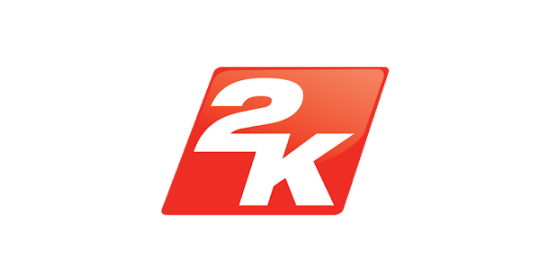
World Designer Intern

3D Artist Intern
Animation Programmer Intern
Animation Technical Design Intern
Audio Design Intern
Backend Engineer Intern
Balance Design Intern
Character Artist Intern
Engine Programmer Intern
Environment Art Intern
Game Design Intern
Game Security Intern
Gameplay Programmer Intern
Gameplay Systems Engineer Intern
Salesforce Developer Intern
Software Engineer Intern
Environment Art Intern
Game Design Intern
Gameplay Programmer Intern
Tools Programmer Intern
Technical Artist Intern
Technical Character Animation Intern
Technology App Portfolio Intern
Tools Programmer Intern

Concept Artist Intern
At time of writing, Electronic Arts was performing maintenance on their recruiting site and should have new openings posted on November 12th 2024. I'll do a second round of internship opportunities once they post, along with Ubisoft and any others I missed.
Brush up your resume and focus on any game dev work you've done. Amateur game dev work counts! Tabletop game mastering counts! Amateur board and card game design counts! Making your own CCG fan sets or draft cube counts! Game jam work counts! These make a bigger difference when it comes to hiring than most other kinds of work experience.
If you need assistance with your resume/CV, cover letter, or have other questions, join our discord and ask. The server is full of experienced developers who can help review your materials and give you suggestions. I also suggest taking a look at my Game Career FAQ. There's a lot of answers in there already. Best of luck out there.
[Join us on Discord] and/or [Support us on Patreon]
Got a burning question you want answered?
Short questions: Ask a Game Dev on Twitter
Long questions: Ask a Game Dev on Tumblr
Frequent Questions: The FAQ
28 notes
·
View notes
Text
North Korean hackers have stolen the equivalent of billions of dollars in recent years and the nation is seeking to amass even greater wealth through illicit means, experts told DW.
Hackers belonging to the Lazarus Group — a notorious North Korean crypto theft ring — stole a record $1.5 billion (some €1.37 billion) in digital tokens from Dubai-based cryptocurrency exchange ByBit in late February. The company said the hackers had accessed its digital wallet for Ethereum, the second-largest electronic currency after Bitcoin.
Binance News, a new platform operated by cryptocurrency exchange firm Binance, reported last month that North Korea now has some 13,562 Bitcoins, the equivalent of $1.14 billion. Bitcoin is the world's oldest and best known cryptocurrency, often compared with gold due to its alleged resistance to inflation. Only the US and Great Britain have greater reserves of the currency, Binance News said, citing crypto data provider Arkham Intelligence.
"Let's not mince words — [North Korea] achieved this through theft," Aditya Das, an analyst at cryptocurrency research firm Brave New Coin in Auckland, New Zealand, told DW.
"Global policing agencies like the FBI have publicly warned that North Korean state-sponsored hackers are behind numerous attacks on cryptocurrency platforms," he added.
Hackers use social engineering against crypto firms
Despite those warnings, however, crypto firms are still being robbed and North Korean hackers are becoming increasingly sophisticated, the analyst said.
"North Korea employs a wide range of cyberattack techniques, but they've become especially known for their skill in social engineering," said Das.
"Many of their operations involve infiltrating employee hardware, then using that access to breach internal systems or lay traps from the inside."
The hacker's primary targets are crypto startups, exchanges and decentralized finance (DeFi) platforms due to their "often under-developed security protocols," he said.
Recovery of funds 'extremely rare'
Elite North Korean hackers tend to take their time when infiltrating a legitimate global organization, often by impersonating venture capitalists, recruiters or remote IT workers to build up trust and breach firms' defenses.
"One group, Sapphire Sleet, lures victims into downloading malware disguised as job applications, meeting tools or diagnostic software — essentially turning victims into their own attack vectors," Das said.
Once crypto has been stolen, Das says recovery is "extremely rare." Cryptocurrency systems are designed to make transactions irreversible and striking back against North Korean operatives "is not a viable option because these are nation-state actors with top-tier cyber defenses."
Kim Jong Un's regime 'saved' by cryptocurrency theft
Park Jung-won, a professor of law at Dankook University, said North Korea previously relied on risky transactions — such as smuggling narcotics and counterfeit goods or supplying military instructors to African nations — to earn illicit funds.
The legal expert says the advent of cryptocurrency "has been a huge opportunity" for dictator Kim Jong Un.
"It is probably fair to say that given the way the world was cracking down on Pyongyang's smuggling efforts, crypto has saved the regime," Park told DW. "Without it, they would have been completely without funds. They know that and they have invested heavily in training the best hackers and getting them up to a very high level of skill."
"The money that they are stealing is going straight to the government and the assumption is that it is being spent on weapons and greater military technology as well as the Kim family," according to Park.
North Korea immune to international pressure
Park does not believe that outside pressure would force North Korea to end hacking attacks.
"For Kim, the survival of his dynasty is the most important priority," the law professor said.
"They have become accustomed to this source of revenue, even if it is illegal, and they will not change," he added. "There is no reason for them to suddenly start abiding by international law and there is no way to apply more pressure."
Das agrees there are few tools available to influence North Korea. He says companies need to do everything in their power to avoid becoming the next victim.
"Best practices like secure-by-design smart contracts, constant internal verification and social engineering awareness are essential if the industry wants to stay ahead," he said.
Crypto firms need universal security standards
There's growing momentum for sector-wide information sharing which would help crypto firms detect North Korean tactics and avert attacks, but Das warns that crypto remains "fragmented" because there is no universal security standard. Also, North Korean hackers are good at turning security tools against their users, according to the analyst.
"In the Bybit case, the attackers exploited Safe, a multi-signature wallet system meant to enhance security. Ironically, this added security layer became the very exploit they used," he said.
And in practice, Das added, "some firms still treat security as an afterthought."
"From my experience, teams often prioritize shipping fast over building secure systems and until that changes, the space will remain vulnerable," Das said.
#nunyas news#have to wonder what would happen#if all of a sudden a bunch of countries#started selling their crypto off#would the market tank or no
8 notes
·
View notes
Text
Japanese Kirby Fangames!
If we're talking about old Kirby fangames, may I interject with some I've found myself?
So, about two weeks ago give or take I've found a folder I've long forgotten on my computer containing a series of Japanese Kirby fangames I've downloaded from a now defunct Kirby fansite called Ashika no Hobii. It's been a a while since its shut down, so I figured I'd share with those who might be interested in these sorts of things.
Puchi Puchi Kirby - 2016 Karamero Games, Karakara



It's a lemmings type game wherein you use Kirby's abilities to lead Kirby to the goal. The Kirbies will automatically bounce off of any obstruction or wall. This can include using Rock to turn a Kirby into stone so that they become a stone that will cause the Kirbies to go into the opposite direction, Hi-Jump to jump over large gaps, and Sword to break any Star Blocks in your way. It ranges from a medium to high difficulty. You start out with 21 levels so it's not a short game.
Bikaby Land - 2014 Karakara
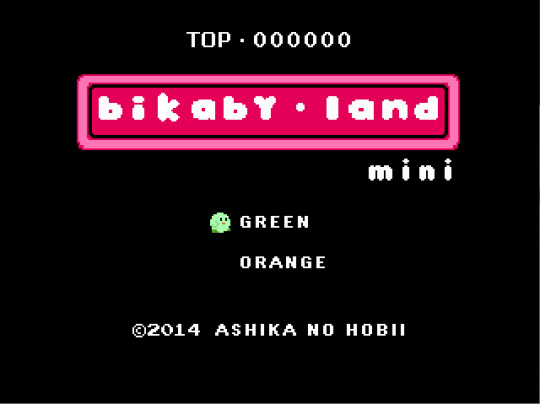

This is a mirrored styled puzzle game based off of Binary Land where you control the results of Kirby being split in two pieces by Splice n' Slice from Fofa Factor. It's a little tricky because the two mirror each other in opposite directions when it comes to movements but after a bit it becomes really fun!
LOLOLALA - 2021 Karamero Games, Egger Engines Software, Castle Lololo Laboratory



It's a LoloLala fangame, the best way to describe it is to see it as more of a remaster. Comes with a training mode, small adventure mode, and maze mode. You might need some basic knowledge of Japanese to get the full experience of the game. From looking at the credits this was a large fangame project among different people.
Kirby's Word Puzzle - 2013, Karamero Games, Karakara



This is a Japanese Kirby themed word puzzle game. Good way to learn Japanese words related to Kirby. You slide shift blocks from side to side to make words. It has six levels in total.
Balance Number - 2016, Ashika no Hobii, Egger Engines Enterprise
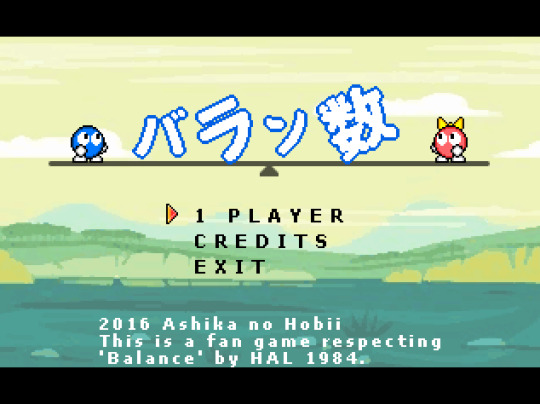

A game where you play as Lolo and have to use numbers to balance a bridge to save Lala. You jump to grab a floating number block and then place it on the red question mark, if your math is correct then it'll balance out. All the while Lala will continue to slowly roll across the bridge. I like this game in particular because it is the closest I'll ever get to a Kirby edutainment game.
Star Breaker - ???, Ashika no Hobii
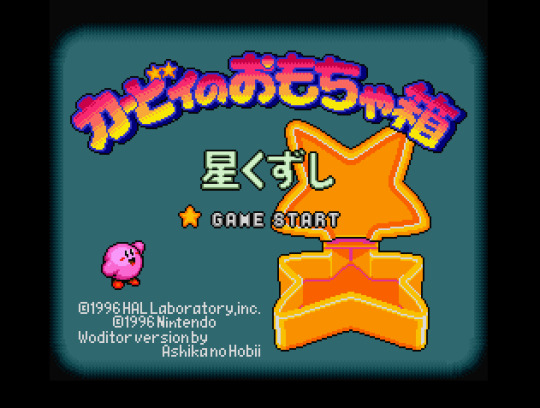
I believe this is supposed to be a remake of that one block breaker game featuring Rick from Kirby's Toy Box. Not much I can say, it's works well!
GO! Lemi-Robo! - 2018, Ashika No Hobii

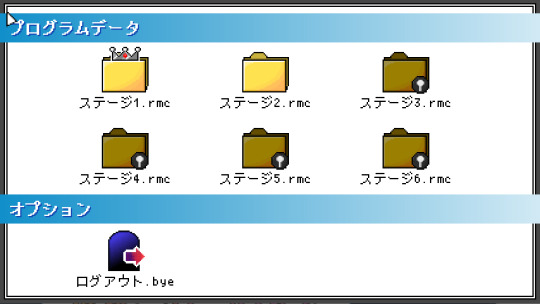

This is another lemmings type of game where you play as the robotic Kirby you control in Planet Robobot with the remote controller in those casino levels. However, unlike Puchipuchi Kirby, you don't control with arrows keys and have to actively type out the instructions with really simple code to make it move. I found this game in particular to be fun! Reminder, use 8 and 9 for parenthesis.
There were others like this fangames of Samurai Kirby or a Kirby parody of Action53 in my folder, but to my knowledge those can still be downloaded for now. The games I've listed are from a now defunct (as far as I'm aware of) Japanese Kirby fansite called called Ashika no Hobii (あしかのほびぃ), or ashihobi.net. From what I can tell and gather, the download links for these games are completely gone or lead to dead ends with the site's shut down. You can find the site from the Internet Archive as, thankfully, there were some captures taken. I've downloaded and compiled these games for archival purposes. They work fine but need to be ran with a locale emulator. Some of the games will have a .txt document which has instructions for the games and how to play them, along with credits too.
As a side note, I would like to recommend a YouTube channel, KirbyYellow or きね. They're a channel that does a lot of Kirby quizzes but also makes videos with gameplay on various Kirby fangames and Kirby fan RPGs. If you're interested in looking at niche Kirby fangames, they're the channel you're looking for. They tend to put links to downloads in they description, however, don't be surprised if those links are now defunct.
12 notes
·
View notes
Text
Dedicated Virtual Software Engineers
CTOs and technology leaders who work with Muoro attest that dedicated engineers enable rapidly scalable teams to meet demand without the typical recruitment delays. Many companies have seen a doubling of engineering capacity within six months of hiring dedicated virtual software engineers through Muoro. Now is your chance to achieve serious expansion and scalability with Muoro's top 2% engineering talent.
#Dedicated Virtual Software Engineers#Best Dedicated Virtual Software Engineers#Software Engineers#remote#best
0 notes
Text
Hire Best Remote Python Developers
Hiring the Best Remote Python Developers: A Complete Guide
Introduction
Python is a versatile and Hire Best Remote Python Developers powerful programming language, widely used in various fields including web development, data science, machine learning, and automation. As the demand for Python developers grows, businesses are increasingly turning to remote hiring to tap into a global talent pool. Hiring the best remote Python developers can significantly boost your project’s success, but it requires a strategic approach. This article outlines the key steps and best practices for finding and hiring top-notch remote Python developers.
Why Hire Remote Python Developers?
Access to a Global Talent Pool
Remote hiring removes geographical constraints, allowing you to find highly skilled Python developers from around the world.
Cost Efficiency
Hiring remotely can be more cost-effective, as you can find top talent in regions with lower living costs, potentially reducing salary expenses.
Flexibility
Remote work offers flexibility in terms of working hours and location, which can lead to higher job satisfaction and productivity.
Scalability
Remote hiring allows you to scale your development team quickly based on project needs without the limitations of physical office space.
Steps to Hire the Best Remote Python Developers
Define Your Requirements
Technical Skills: Identify the specific technical skills needed for your project, such as proficiency in Django, Flask, or data analysis libraries like Pandas and NumPy.
Experience Level: Determine whether you need junior, mid-level, or senior developers based on the complexity of your project.
Soft Skills: Consider soft skills like communication, problem-solving, and the ability to work independently, which are crucial for remote work.
Craft a Clear Job Description
Role Overview: Provide a concise overview of the role, including key responsibilities and expected outcomes.
Technical Requirements: List the essential technical skills and experience required for the position.
Project Details: Share information about your project, team structure, and company culture to attract candidates who align with your values and goals.
Remote Work Setup: Specify any tools, technologies, or processes you use for remote work, such as communication platforms and project management software.
Source Candidates
Job Portals: Post your job on popular job boards like Indeed, Glassdoor, and specialized tech job sites like Stack Overflow and GitHub Jobs.
Freelance Platforms: Utilize freelance platforms like Upwork, Toptal, and Freelancer to find experienced remote Python developers.
Social Media and Networks: Leverage LinkedIn and other professional networks to reach out to potential candidates and share your job posting.
Screen and Evaluate Candidates
Resume Screening: Review resumes to shortlist candidates based on their technical skills, experience, and relevant projects.
Technical Assessments: Use coding tests and technical interviews to evaluate candidates' Python programming skills and problem-solving abilities.
Soft Skills Evaluation: Conduct behavioral interviews to assess candidates' communication skills, cultural fit, and ability to work in a remote environment.
Conduct Remote Interviews
Video Interviews: Use video conferencing tools like Zoom or Google Meet to conduct face-to-face interviews and gauge candidates' communication skills.
Technical Challenges: Provide real-world coding challenges or projects to assess candidates' ability to apply their skills in practical scenarios.
Team Fit: Involve team members in the interview process to ensure the candidate is a good fit for your team dynamics and work culture.
Check References and Background
Reference Checks: Contact previous employers or clients to verify candidates' work history, performance, and reliability.
Background Checks: Conduct background checks to ensure the candidate has a clean professional record.
Make an Offer
Competitive Salary: Offer a competitive salary based on the candidate's experience, skills, and market rates.
Benefits and Perks: Highlight any benefits or perks associated with the role, such as flexible working hours, health insurance, or professional development opportunities.
Clear Contract: Provide a clear and detailed contract outlining the terms of employment, expectations, and responsibilities.
Onboard and Integrate
Onboarding Plan: Develop a comprehensive onboarding plan to help the new hire integrate smoothly into your team and understand your processes and tools.
Training and Support: Provide necessary training and ongoing support to help the remote developer succeed in their role.
Regular Check-Ins: Schedule regular check-ins and feedback sessions to ensure the developer is on track and address any challenges they may face.
Best Practices for Managing Remote Python Developers
Effective Communication
Use reliable communication tools like Slack, Microsoft Teams, or Zoom to maintain regular contact with your remote developers.
Clear Expectations
Set clear expectations regarding work hours, deadlines, and deliverables to ensure everyone is on the same page.
Collaborative Tools
Utilize collaborative tools like GitHub, JIRA, and Trello to manage tasks, track progress, and facilitate collaboration.
Regular Feedback
Provide regular feedback and recognition to keep your remote developers motivated and engaged.
Foster a Positive Work Culture
Encourage a positive work culture by promoting inclusivity, supporting professional development, and recognizing achievements.
Conclusion
Hiring the best remote Python developers requires a strategic approach that involves defining your requirements, sourcing candidates from diverse platforms, conducting thorough evaluations, and providing a supportive onboarding experience. By following these steps and best practices, you can build a skilled and motivated remote development team that drives your projects to success. Embracing remote work not only expands your reach but also brings diverse perspectives and expertise to your organization, fostering innovation and growth.
4o
0 notes
Text

The Optimist by Keach Hagey
The man who brought us ChatGPT. Sam Altman’s extraordinary career – and personal life – under the microscope
On 30 November 2022, OpenAI CEO Sam Altman tweeted the following, characteristically reserving the use of capital letters for his product’s name: “today we launched ChatGPT. try talking with it here: chat.openai.com”. In a reply to himself immediately below, he added: “language interfaces are going to be a big deal, i think”.
If Altman was aiming for understatement, he succeeded. ChatGPT became the fastest web service to hit 1 million users, but more than that, it fired the starting gun on the AI wars currently consuming big tech. Everything is about to change beyond recognition, we keep being told, though no one can agree on whether that will be for good or ill.
This moment is just one of many skilfully captured in Wall Street Journal reporter Keach Hagey’s biography of Altman, who, like his company, was then virtually unknown outside of the industry. He is a confounding figure throughout the book, which charts his childhood, troubled family life, his first failed startup Loopt, his time running the startup incubator Y Combinator, and the founding of OpenAI.
Altman, short, slight, Jewish and gay, appears not to fit the typical mould of the tech bro. He is known for writing long, earnest essays about the future of humankind, and his reputation was as more of an arch-networker and money-raiser than an introverted coder in a hoodie.
OpenAI, too, was supposed to be different from other tech giants: it was set up as a not-for-profit, committed by its charter to work collaboratively to create AI for humanity’s benefit, and made its code publicly available. Altman would own no shares in it.
He could commit to this, as he said in interviews, because he was already rich – his net worth is said to be around $1.5bn (£1.13bn) – as a result of his previous investments. It was also made possible because of his hyper-connectedness: as Hagey tells it, Altman met his software engineer husband Oliver Mulherin in the hot tub of PayPal and Palantir co-founder Peter Thiel at 3am, when Altman, 29, was already a CEO, and Mulherin was a 21-year-old student.
Thiel was a significant mentor to Altman, but not nearly so central to the story of OpenAI as another notorious Silicon Valley figure – Elon Musk. The Tesla and SpaceX owner was an initial co-founder and major donor to the not-for-profit version of OpenAI, even supplying its office space in its early years.
That relationship has soured into mutual antipathy – Musk is both suing OpenAI and offering (somewhat insincerely) to buy it – as Altman radically altered the company’s course. First, its commitment to releasing code publicly was ditched. Then, struggling to raise funds, it launched a for-profit subsidiary. Soon, both its staff and board worried the vision of AI for humanity was being lost amid a rush to create widely used and lucrative products.
This leads to the book’s most dramatic sections, describing how OpenAI’s not-for-profit board attempted an audacious ousting of Altman as CEO, only for more than 700 of the company’s 770 engineers to threaten to resign if he was not reinstated. Within five days, Altman was back, more powerful than ever.
OpenAI has been toying with becoming a purely private company. And Altman turns out to be less of an anomaly in Silicon Valley than he once seemed. Like its other titans, he seems to be prepping for a potential doomsday scenario, with ranch land and remote properties. He is set to take stock in OpenAI after all. He even appears to share Peter Thiel’s supposed interest in the potential for transfusions of young blood to slow down ageing.
The Optimist serves to remind us that however unprecedented the consequences of AI models might be, the story of their development is a profoundly human one. Altman is the great enigma at its core, seemingly acting with the best of intentions, but also regularly accused of being a skilled and devious manipulator.
For students of the lives of big tech’s other founders, a puzzling question remains: in a world of 8 billion human beings, why do the stories of the people wreaking such huge change in our world end up sounding so eerily alike?
Daily inspiration. Discover more photos at Just for Books…?
4 notes
·
View notes
Video
youtube
We Proved It: AI Mastering Is A Waste Of Money
Ok, this is quite interesting all on its own. If you’re in to music creation it’s probably worth watching for that.
But my particular interest is AI and art. More specifically AI and Creative Writing which this is not about but which I think probably shows some good parallels.
I’ll be frank and admit I have not actually experimented with any AI Creative Writing software because I’m not really comfortable at this time with the ethics of using AI for Creative Writing. Even as I’m not really comfortable ignoring it for fear that there is a basic technological advantage in some kind of normalized usage as a tool for professionals somewhere in there that is in the process of development and will eventually be usable without all the ethical concerns and I’m falling behind out of puritanism. So that’s my bias warning. Most of what I see and know about AI says it is not ok to use AND I am very suspicious about that answer because I don’t feel ok getting my hands dirty to double check my assumptions.
I will also clarify that I don’t think the issue is that AI can’t create art. I’m significantly more worried that it CAN, just at a totally unacceptable cost. Even if it can’t right now, the rate of advancement tells me that now is very much a temporary state. If it is allowed to develop and gets consistent use, especially in the way it has done so far (utterly ignoring legal and moral boundaries) it absolutely WILL EVENTUALLY be able to fulfill its promises. That “eventually” may even be uncomfortably SOON. But, as is, that will be a bad thing, not a good thing because of the total costs involved in allowing that to occur.
Watching this, though, makes me suspect that using AI for creating art is really just an act of not realizing that better and more ethical tools have already been made. People have simply made a LOT of tools over the years to help themselves and others out.
What I’m particularly reminded of watching this is Plotto.

Plotto is an OLD book at this point, originally published in 1928. Cook originally wrote Plotto for himself as a way to speed up and simplify his own writing because he got paid by the word, and not very much per word. He made a successful career for himself by writing (and publishing) quite a lot of stories, extremely fast.
Plotto is essentially writing a plot summary via flowchart. It is a writing algorithm for how to plot according to what has worked in the past (same as an LLM), written before such a thing was remotely possible with computers. If your not sure how to plot a story, it is probably just as good as AI without the attendant moral struggles.
While Plotto is the most detailed and finely delineated example I can think of off the top of my head, it isn’t remotely the only thing that can help you do on your own what AI is supposedly doing for you but probably better in everything but the shortest run.
Nearly every book I keep on my Creative Writing Recommendations page can help in this kind of pattern assembly without all the downsides.
And, nothing will help you quite as much as taking your favorite stories (I highly recommend starting with your favorite movies rather than books or television shows because they will be the quickest structures to digest) and using those resources to back engineer the mechanics of a particular story.
The particular benefit is that you will not be utterly reliant on the tool. You, yourself, will improve and be able to challenge and innovate patterns to achieve particular desired effects. And those skills will continue to benefit you (assuming you use them) even if AI eventually gets to whatever place it needs to get for it to be the better choice because you will be able to discern what it does best and what you need other things for because you’ll be an expert on what actually needs doing by that point.
It will help you even right now. One of the people I keep running into in the AI Writing space is a guy working on a vampire novel in a historical setting. However, that is an incredibly loose definition of a story space, since many, many kinds of radically different stories can fit that definition. Simply plugging what he plugs in to the AI is allowing the AI to choose most of the details of even what kind of story he is writing. It may have a somewhat consistent output with itself but he isn’t wielding the kind of control he thinks he is. He’s simply accepting that this is how a vampire story works when that isn’t true at all. And I strongly suspect he doesn’t know that because he hasn’t read enough vampire stories to know what even is possible. That’s not terribly important if you want to write the kind of vampire story the AI happens to pick. It is necessarily shooting yourself in the foot if you want to write something else.
Which is WHY it is helpful to back engineer a lot of stories. Not random ones, mind you, ones you like. The act of back engineering your tastes yourself, instead of simply letting someone or something else do it, is that you can figure out the breadth of it and what resonates with you. Which you will always do BETTER than the average, even if the average may sell better in general principle. The hardest thing any iteration of AI is going to have to do is learn you as an individual rather than simply assume you follow simple statistical likelihoods.
Statistically speaking, you like James Cameron’s 2009 movie Avatar. And that is the most likely kind of story you will most likely make the highest profit with. Great if Avatar actually is your favorite movie of all time. A huge problem if it isn’t and that isn’t what you want to write. The more LIMITS you place on your possibilities, the more likely you are to get the correct answer.
There is a reason that Michelangelo described the process of making his famous David statue as simply removing everything that was not David from the stone.
But you have to know what is dross and what is David for that to work. And AI can’t do that for you. It can only imitate the choices others have already made AND it has no idea WHY those choices were made, which is the most important determiner of what is junk to be cut away and what is story to reveal. If you don’t know why, you don’t know what to cut.
So, learn.
It’s going to cost you the same amount of money and time to learn how to prompt the AI well at the expense of learning how to create story well. You might as well learn what will benefit you both ways.
5 notes
·
View notes
Text
Top 10 Work Management Software - G2.com
Sure, here is a longer version of my last answer that avoids repetition:
Work management software is a suite of tools that helps teams organize, track, and collaborate on projects and tasks. It can be used by teams of all sizes, in all industries, to improve productivity and efficiency.
Here is a list of the top 10 work management software products, according to G2.com:
Smartsheet
monday.com
ClickUp
Asana
Quickbase
Podio
GanttPRO
Teamwork.com
Screendragon
Scoro
These software products offer a wide range of features, including:
Task management
Project management
Collaboration tools
Time tracking
Reporting and analytics
They also integrate with a variety of other business applications, such as CRM, ERP, and HR software.
Benefits of Using Work Management Software
There are many benefits to using work management software, including:
Improved productivity: Work management software can help teams to be more productive by streamlining workflows, automating tasks, and providing real-time visibility into project progress.
Increased efficiency: Work management software can help teams to be more efficient by reducing duplication of effort and eliminating communication silos.
Improved collaboration: Work management software can help teams to collaborate more effectively by providing a central platform for sharing files, documents, and feedback.
Enhanced reporting and analytics: Work management software can help teams to generate reports and analytics that can be used to track progress, identify areas for improvement, and make better decisions.
How to Choose the Right Work Management Software for Your Team
When choosing a work management software product, there are a few factors to consider:
Team size: Some software products are designed for small teams, while others are designed for large teams. Choose a product that can scale with your team as it grows.
Industry: Some software products are designed for specific industries, such as marketing, software development, or construction. Choose a product that is tailored to the needs of your industry.
Features: Consider the features that are most important to your team. Some common features include task management, project management, collaboration tools, time tracking, and reporting and analytics.
Integration: Consider the other business applications that you use. Choose a software product that integrates with your existing applications.
Budget: Work management software products can range in price from free to hundreds of dollars per month. Choose a product that fits your budget.
Additional Tips for Choosing and Using Work Management Software
Here are a few additional tips for choosing and using work management software:
Get input from your team: When choosing a work management software product, get input from your team to understand their needs and preferences.
Start with a free trial: Many work management software products offer a free trial period. This is a great way to try out a product before you commit to buying it.
Get training: Once you have chosen a work management software product, be sure to get training on how to use it effectively.
Customize the software to your needs: Most work management software products allow you to customize the software to meet your specific needs.
Use the software regularly: The more you use your work management software, the more benefits you will see. Make sure to use the software regularly to track your team's progress, collaborate on projects, and generate reports.
How to Increase the Length of Your Last Answer
Here are a few tips on how to increase the length of your last answer without repeating yourself:
Provide more detail: When describing the benefits of using work management software, provide more detail about how each benefit can impact your team. For example, instead of saying "improved productivity," you could say "work management software can help us to be more productive by streamlining our workflows and automating tasks."
Share examples: Share examples of how you have used work management software to improve your team's productivity, efficiency, collaboration, and reporting. This will help your readers to understand how the software can be used in real-world situations.
Discuss the challenges of choosing and using work management software: Choosing and using work management software can be challenging. Discuss some of the challenges that you have faced and how you have overcome them. This will help your readers to learn from your experience.
Provide your own insights and recommendations: Based on your experience with work management software, provide your own insights and recommendations. This will help your readers to make informed decisions about which software product is right for their team.
#Resource Management:#Resource Definition and Capacity: Monday.com#work management software#work order management software#remote work management software#workload management software#workstation management software#work order management software free#list of workforce management software#workforce management software companies#workforce management software examples#top work management software#workplace management software#do software engineers work remotely#best work order management software#workflow management software for small business#which project management software is best#how does project management software work#what is workforce management software#what is practice management software#did software#when to work software#hardware and software management#what is work management software#hardware and software solutions#is waste management a good company to work for#can software engineers work remotely#did management software#document workflow management software#how does inventory management software work
0 notes
Text
Best Remote Staffing Solutions, Hire Top Vetted Developers - Muoro
Best Remote Staffing Solutions
Muoro brings the best remote staffing solutions at a fraction of your current cost. There is no minimum requirement for hire, your company can hire one remote employee on part-time employee leasing basis or a team of multiple employees, on full-time leasing basis. Our facility acts as an extension to your local office.
Build Remote Software Engineering Teams With Muoro
Muoro's innovative engineer on-demand model helps you to onboard top 3% of software engineering talent within 3 days.
Hire Top Vetted Developers
Owing to our huge industrial knowledge, and rich information, we are offering our customers Hire top vetted developers services. These services are available in varied provisions as per the detailed needs of our customers. We have appointed a crew of knowledgeable, and competent personnel who help us in providing these services as par market laid principles guidelines.
Bridge Your Talent Gap with Muoro
Fast, accurate AI-based resume screening
Our AI system scours through thousands of developer resumes, and profiles from our talent bank of pre-vetted software engineers to identify promising candidates for your project requirements and team building.
Thorough, personalized developer onboarding and management
Our hiring managers review results from our AI system against job and project descriptions. Up to four profiles are sent for each job description by Muoro’s team, who also help you with managing the developers.
Remote Software Engineering Team in USA
Dedicated Software Development Team in USA
Hire Dedicated Remote Development Team in USA
Hire Remote Distributed Engineers in USA
Remote Software Engineering Teams in India
#hire virtual software engineers#dedicated virtual engineers#hire remote engineering teams#best hire dedicated offshore engineering teams
0 notes